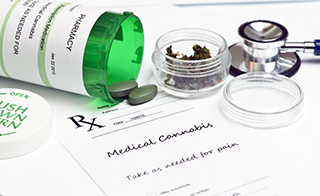 This CE activity was originally published in The Rx Consultant. If you received credit for it previously, you cannot receive credit for it again.
This CE activity was originally published in The Rx Consultant. If you received credit for it previously, you cannot receive credit for it again.
Marijuana has been used for thousands of years for medical conditions, as well as for recreational purposes. The terms “marijuana” and “cannabis” are used interchangeably; however, cannabis is the more contemporary clinical designation. The use of marijuana has increased recently among US adults (18 years and older), from 10% in 2002 to 13% in 2014. The rise in marijuana use coincides with a declining perception of risk linked with its use, and its use is more prevalent in states with permissive medical marijuana laws. As of November 2016, 28 states and the District of Columbia have legalized medical marijuana, and 16 states have laws permitting the use of cannabidiol (CBD; a nonpsychoactive constituent of cannabis) for medical purposes. Seven states (Alaska, California, Colorado, Massachusetts, Nevada, Oregon, and Washington) and the District of Columbia have legalized both medical and recreational cannabis use.
In 2014, over 110,000 people in Colorado (2% of the population) were registered as medical marijuana users for conditions such as cancer, pain, glaucoma, or cachexia.2 As many as 2.6 million people are registered medical marijuana users nationwide. The legalization of medical marijuana in many states has occurred despite the fact that the FDA has yet to approve plant-based marijuana for any medical condition. The FDA has approved 2 synthetic cannabinoids, dronabinol (synthetic THC) and nabilone, for management of nausea and vomiting associated with cancer chemotherapy. Dronabinol is also approved for appetite stimulation in patients with wasting due to acquired immune deficiency syndrome (AIDS)...
Format
Fee
CE Hours
CE Units
Activity Type
- Knowledge
Target Audience(s)
- This accredited program is targeted to pharmacy technicians.
Accreditation(s)
CE activities for Pharmacists and Pharmacy Technicians:
This continuing education (CE) activity meets the requirements of all state boards of pharmacy for approved continuing education hours. CE credit is automatically reported to CPE Monitor.
The American Nurses Credentialing Center (ANCC) for formally approved continuing education (CE) hours, and CE hours of pharmacotherapeutics.
The American Academy of Nurse Practitioners Certification Program (AANPCP) for acceptable, accredited CE.
- The ANCC requires all advanced practice nursing certificants (CNSs and NPs) to complete 25 CE hours of pharmacotherapeutics as a portion of the required 75 continuing education hours.
- Pharmacology CE is recommended by the AANPCP and will be required for Certificants renewing certification starting January 2017.
- Most State Boards of Nursing require a minimum number of pharmacy contact hours to renew an advanced practice license.

Requirements for CE Credit
Objectives
- Identify the main chemicals of marijuana that have potential medical use, and discuss the current regulations surrounding their use.
- State the brand name, generic name, and indication of each FDA approved synthetic marijuana medication.
- Describe the short-term effects of marijuana and the possible long-term side effects.
- Discuss the various methods for administering marijuana and advantages or disadvantages of each method.
Activity Number
0428-0000-16-011-H01-T
